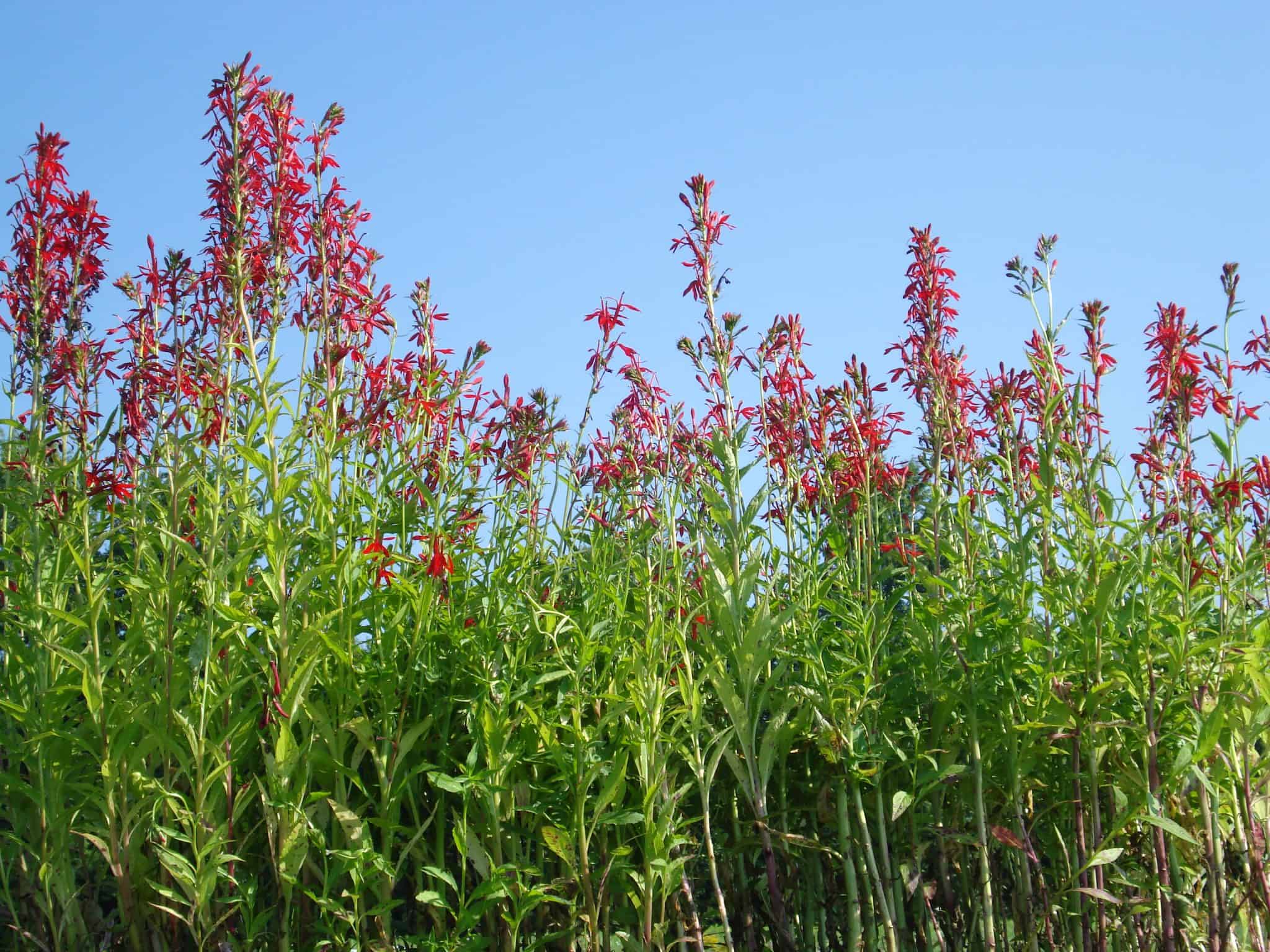Lobelia cardinalis
Cardinal Flower











General
A native perennial herbaceous plant found throughout North America. It is celebrated for its tall spikes of brilliant red tubular flowers that bloom in mid- to late summer, attracting hummingbirds and butterflies. Thriving in moist to wet soils, cardinal flower enhances the beauty of woodland edges, stream banks, and garden borders with its vibrant floral display. The brilliant flowers attract hummingbirds and add color to wetlands. The plant is mildly toxic to mammals if ingested.
Plant Description
Showcases erect stems that can reach up to several feet tall, adorned with lance-shaped leaves arranged alternately along their length. Its striking, tubular flowers are a vivid shade of red, often with a slightly lighter throat, arranged in dense spikes atop the stems. These vibrant blooms, which attract hummingbirds and butterflies, make cardinal flower a standout in wetland edges, stream banks, and garden settings during its summer flowering season.
Height (ft)
4'
Soil moisture
Medium
Soil types
Loam or Sandy Loam, will tolerate coarse soils
Wetland indicator
FACW+
Shade tolerance
Tolerant, full sun to full shade
Bloom color
Red
Bloom period
Late Summer
Drought tolerance
Medium
Salinity tolerance
None
Range
Eastern and Southwestern United States, in the east, extending north into Canada.

Kartesz, J.T. 2024. Floristic Synthesis of North America, Version 1.0. Biota of North America Program (BONAP) [website http://bonap.org/]
Additional Information
According to the USDA NRCS National Plant Data Service, this species has been used medicinally by many tribes. The Iroquois would boil the roots of this species along with chicory to treat fever sores. The mashed plant in its entirety could also be decocted into a treatment for cramps. Also, used as an emetic and when this plant is added to other medicines it makes them stronger. Delaware tribe used this to treat typhoid, Meskwaki tribe used as a ceremonial tobacco throwing it to the wind to deflect any storms. The Pawnee tribe would use the roots and flowers as a love charm.
